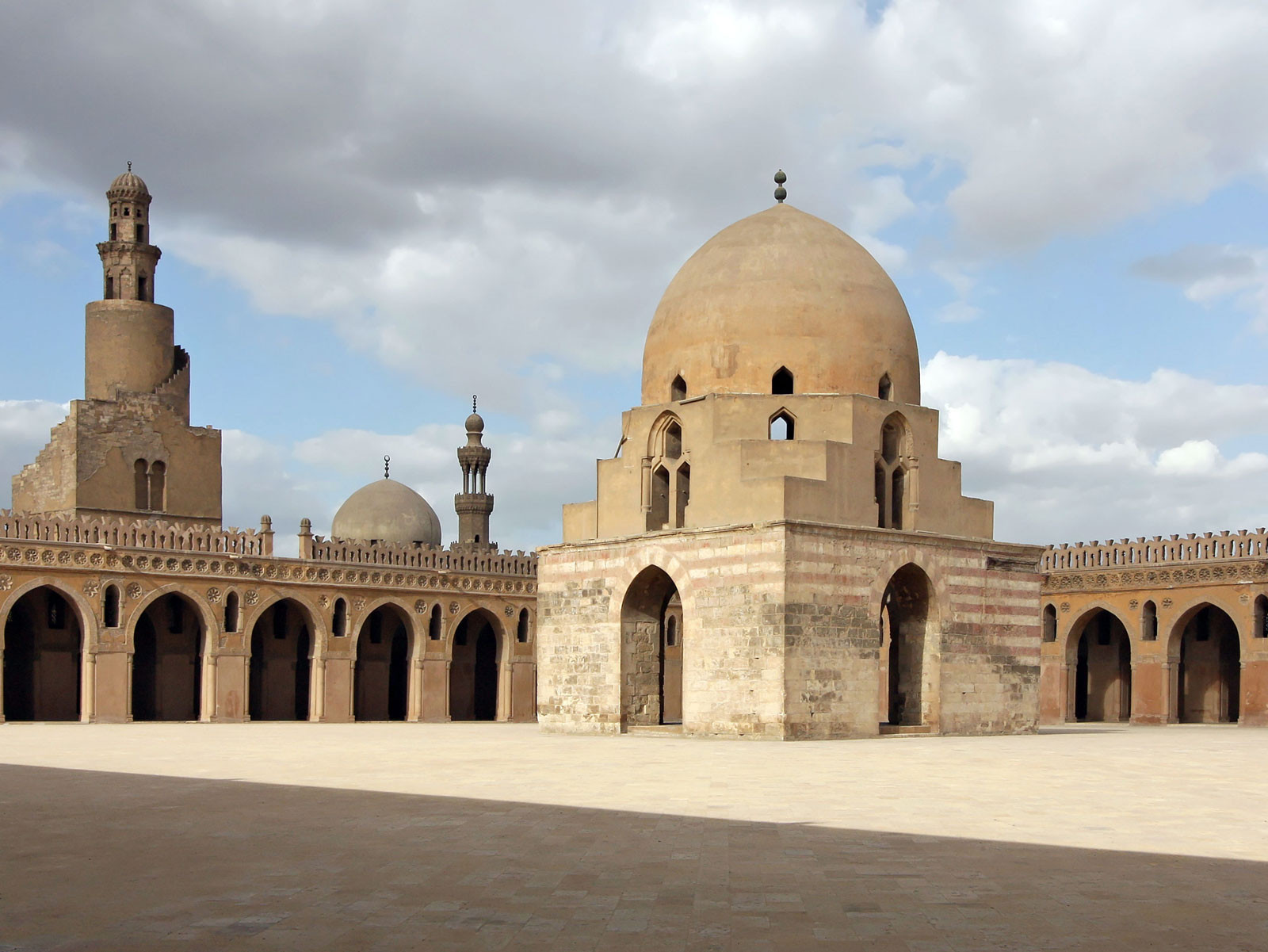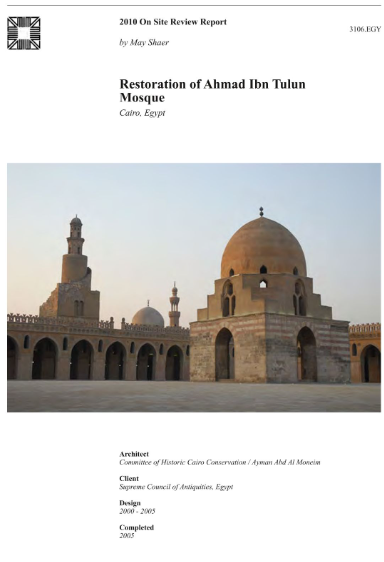

The Mosque of Ahmad Ibn Tulun is one of the most important architectural monuments of Cairo and of the Islamic world as a whole. It dates back to the last quarter of the ninth century, and therefore belongs to the formative period of Islamic architecture. The fabric of the mosque has survived exceptionally well, especially considering its brick and plaster construction, the heavy – sometimes insensitive – uses to which it has been put over the centuries, and its location in a congested part of Cairo.
The forms and carved plaster decorative motifs of the mosque are considered amongst the finest examples of the emergent ‘classical’ Abbasid tradition of Islamic architecture. The mosque was built by Ahmad Ibn Tulun, who was a product of the Abbasid court in Samarra, the royal suburb of Baghdad, and it survives in much better condition than its two prototypes in Samarra, the Great Mosque and the Abu Dulaf Mosque – the largest mosques constructed in the history of Islam. The Mosque of Ibn Tulun is consequently of extreme historical and artistic importance, and any efforts to preserve it will be followed with considerable interest by anyone involved in the study of Islamic architecture.
I agree to the terms outlined below:
You agree to upload and assign Mosqpedia Database the rights to use the content worldwide and in perpetuity across all current and future media platforms. Mosqpedia Database may edit, copy, adapt and translate your contribution.
The content will be distributed under the Creative Commons Attribution-Deed – Attribution-NonCommercial-NoDerivatives 4.0 International – Creative Commons
All data will be stored in line with data protection regulations.